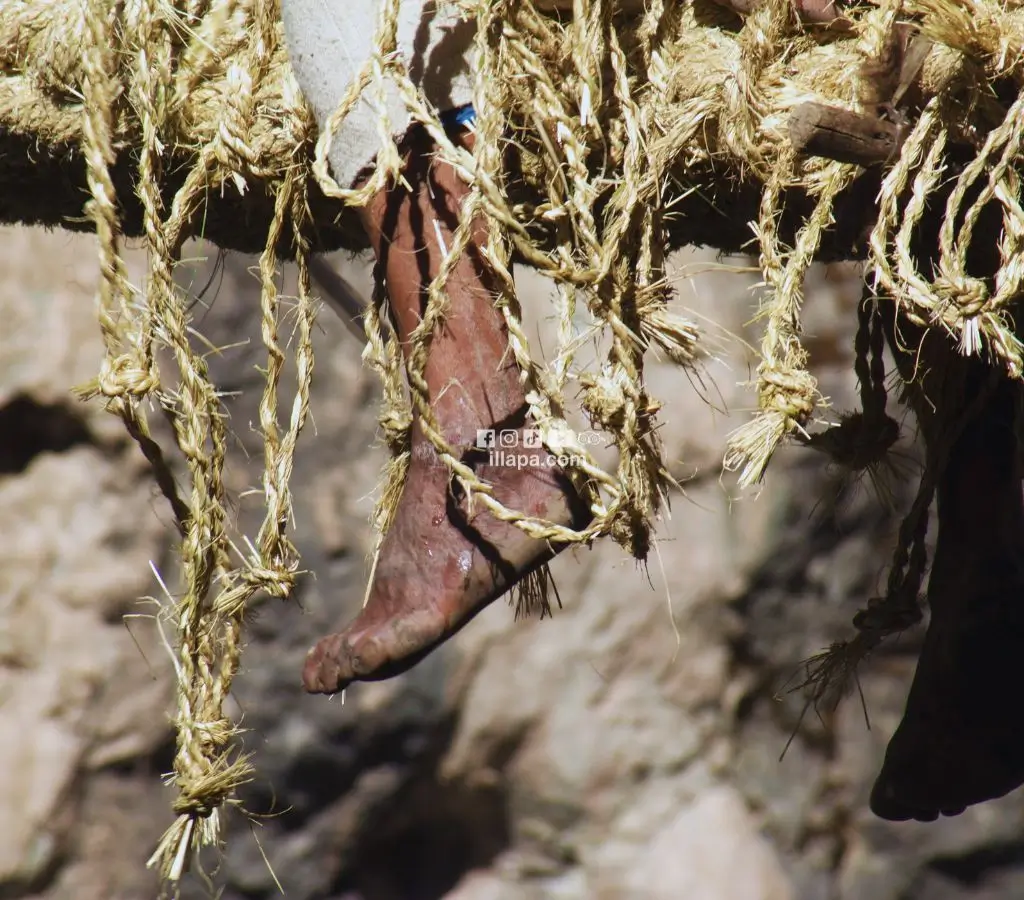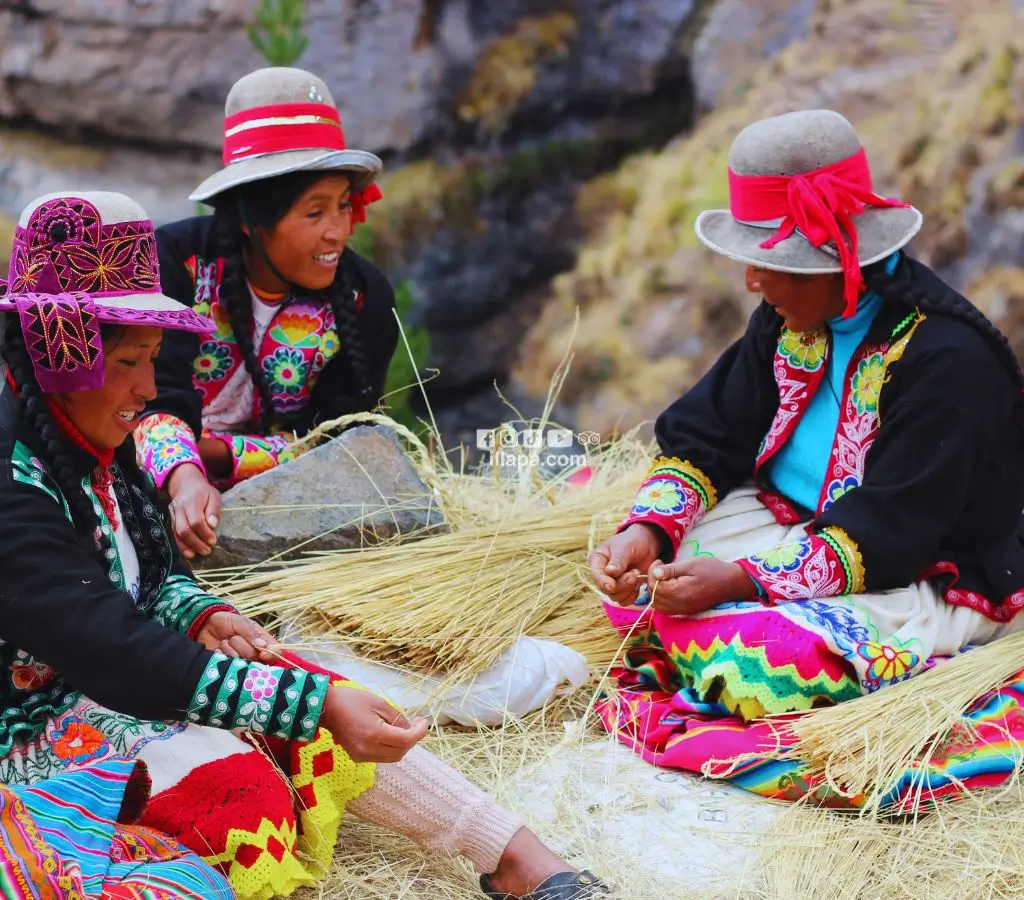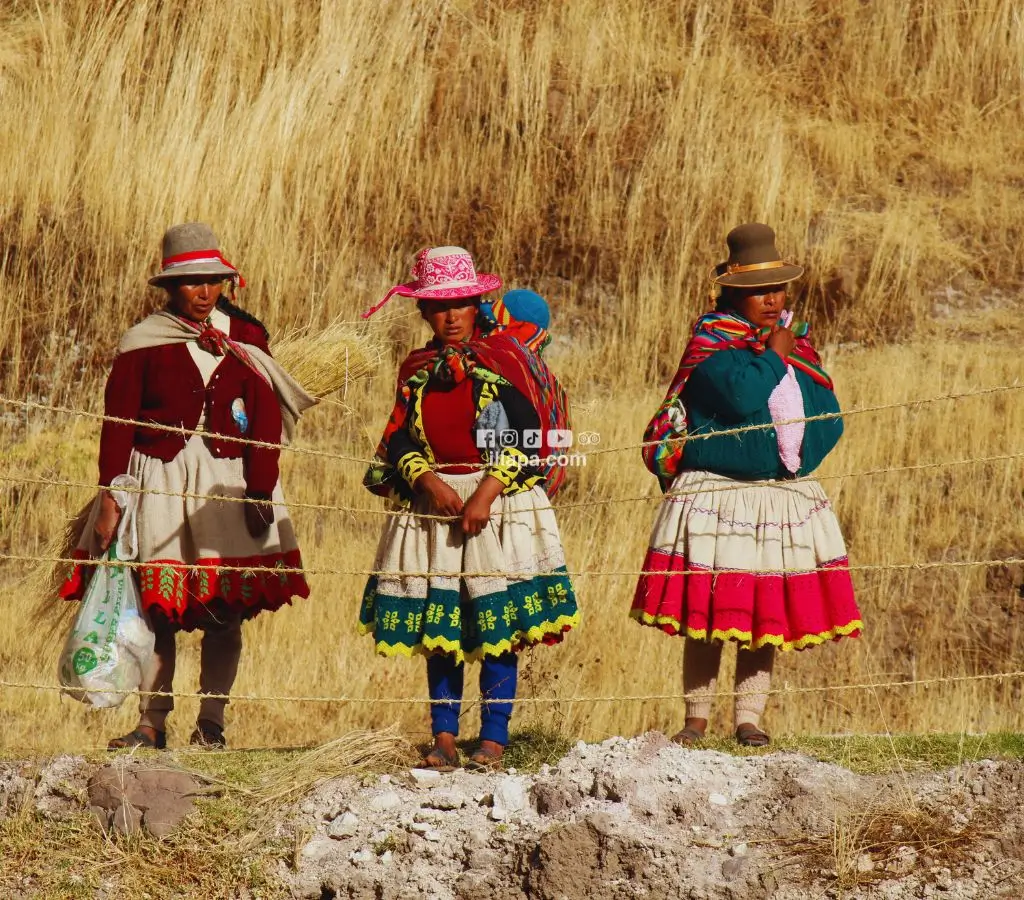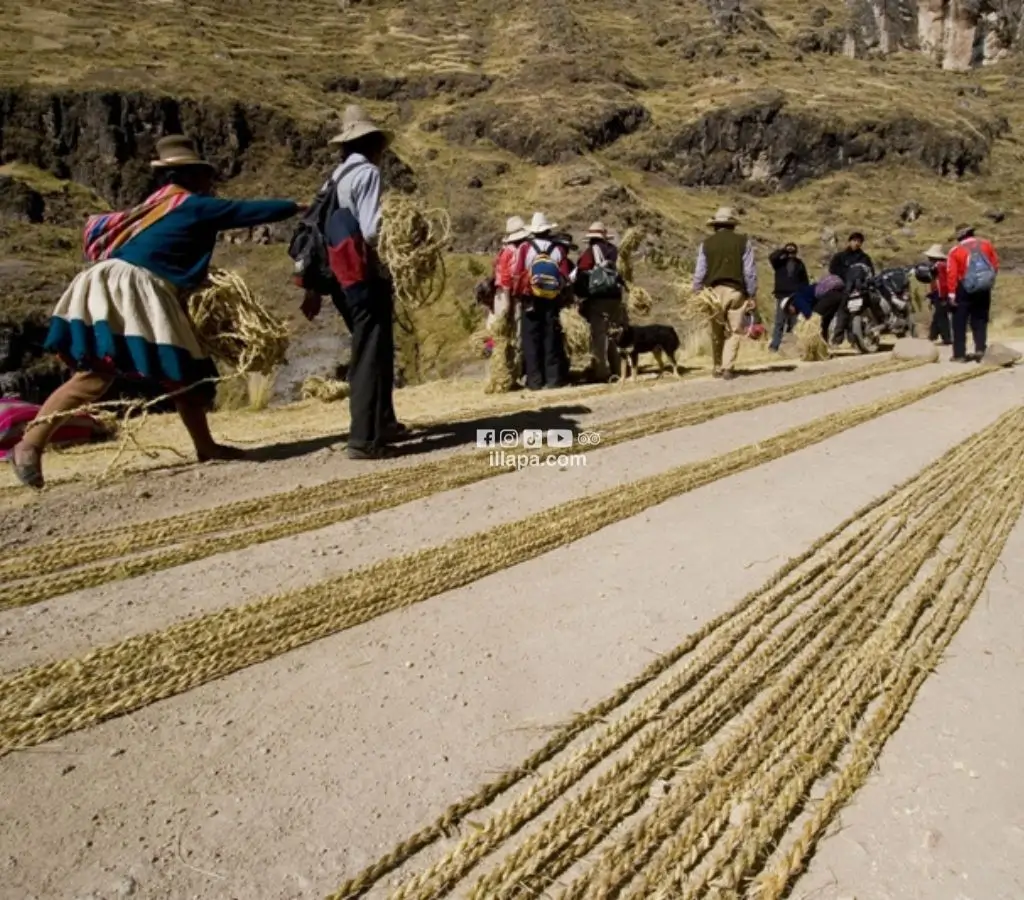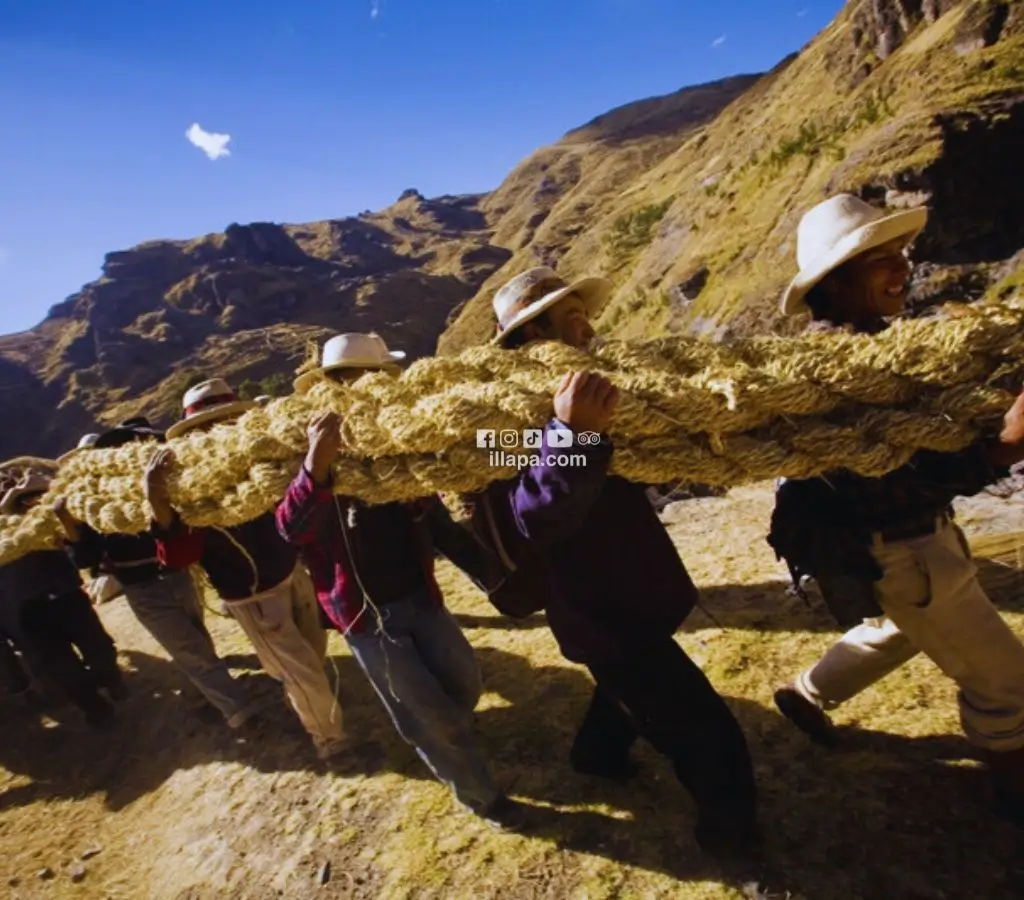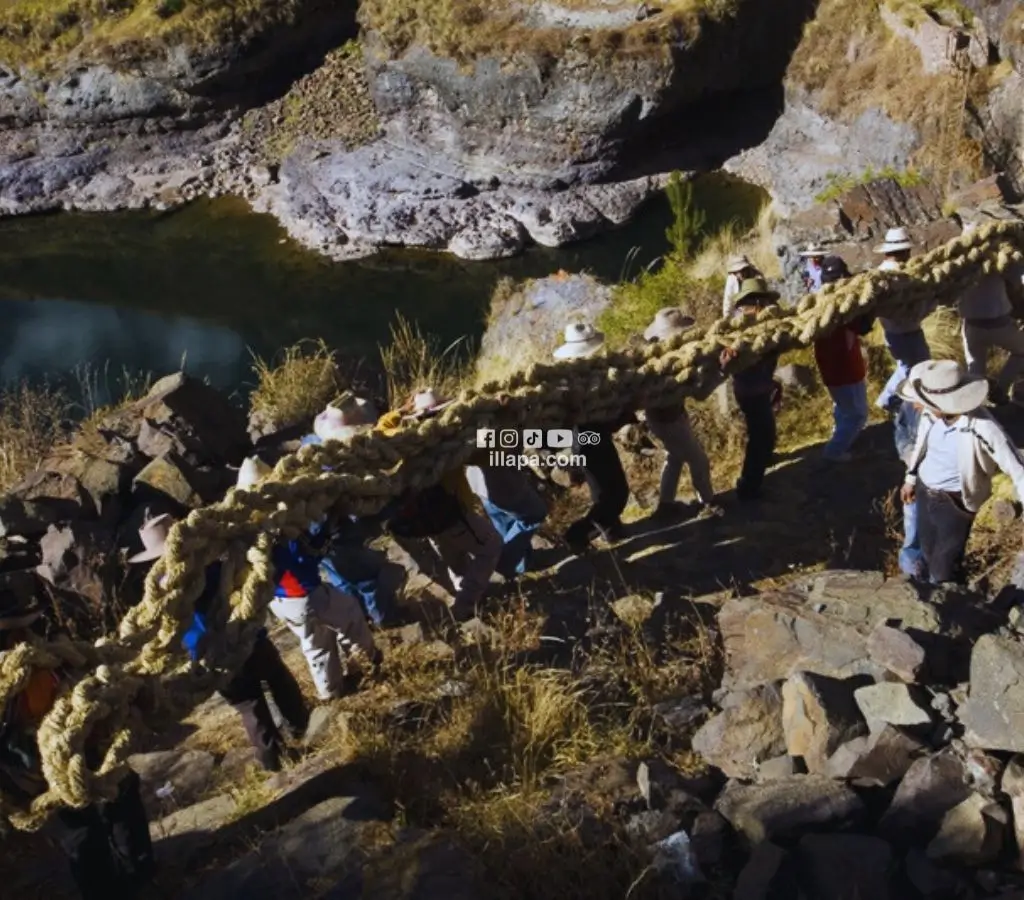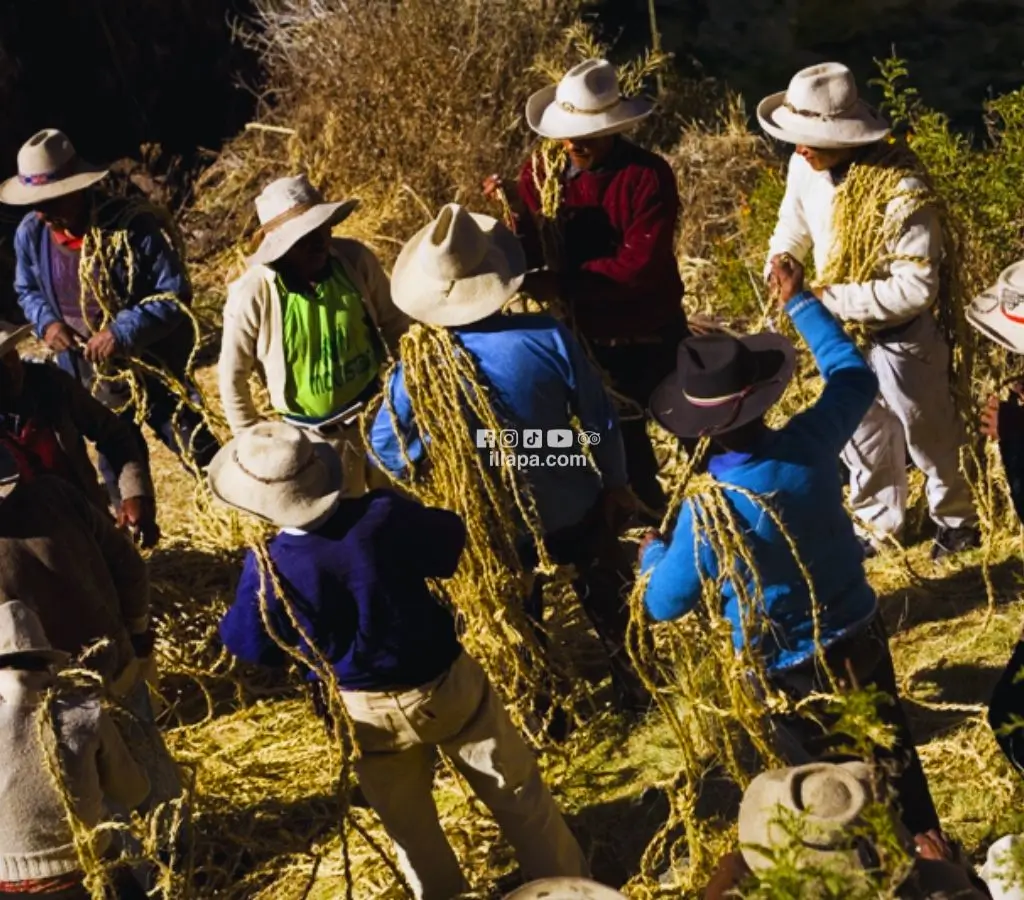Today we will learn about one of the many ancient architectural wonders, the "Queshuachaca Bridge," which represents a living link to the history of the Inca people in the Cusco region, Canas. This bridge is recognized as the last Inca bridge preserved in its original and functional form, constituting a tangible testament to the ingenuity and skill of this ancient civilization.
The Queshuachaca Bridge, also known as the Q'eswachaka Bridge, has a history that dates back to the times of the Inca Empire. According to studies, it dates back over 600 years, and it was part of an extensive road network that connected the vast territories of the Inca Empire.
At its time, this bridge played a crucial role in the Inca communication system, allowing safe passage over the swift rivers that cut through the mountainous region of the Andes. It was practically a monument to the connection between man and nature, a masterpiece of engineering intertwined with the very essence of the earth.
Through the centuries, the Queshuachaca Bridge remained intact, defying the erosion of time with its unyielding strength, as each woven fiber, each carefully crafted knot, told a story of craftsmanship and tireless dedication of an entire people.
Today, this bridge still stands, proud and majestic. It is more than a relic of the past; it is a living reminder of the Inca greatness. And as life flows on as usual, the Queshuachaca Bridge stands, an eternal monument to the greatness of a civilization lost in time.
This is due to the fact that the inhabitants of the four communities of Huinchiri, Chaupibanda, Qollana Quehue, and Chocayhua continue to preserve this tradition and pass it on from generation to generation. Therefore, the ritual takes place every June when these communities gather and completely renew a new bridge.
The name "Queshuachaca" comes from the Quechua language, where "Queshua" refers to the ichu or straw plant (a type of grass that grows in the Andean heights), while "chaca" means "bridge." Therefore, "Queshuachaca" can be interpreted as "rope bridge or hanging bridge."
There is some variability in how the bridge is referred to, as some documents call it "Queshuachaca," while others use "Q'eswachaka." This is due to regional pronunciation differences; however, both terms are accepted because they refer to the same Inca bridge located in the province of Canas.
The Queshuachaca Bridge stands out for its unique design and completely handmade construction. With an approximate length of 28 meters and a width of 1.20 meters over the Apurímac River, this suspension bridge is mainly made of natural fibers of ichu and straw, interwoven using traditional weaving and tying techniques of Inca culture.
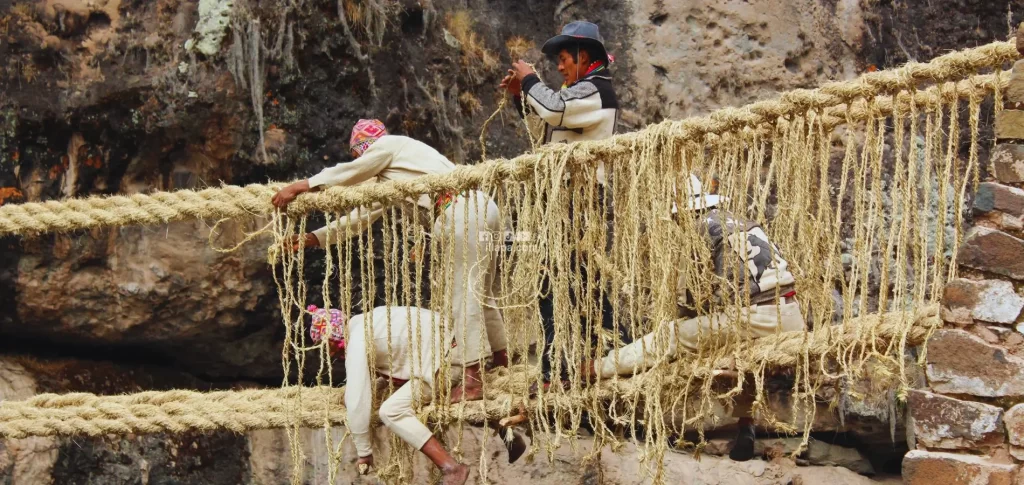
The construction of the Queshuachaca Bridge is a laborious process that requires the coordinated participation of expert weavers and local communities. This involves a procedure in which women and men participate.
In summary, ichu fibers collected from the highlands, where the cold and dry climate favors their growth, are used. They are then meticulously braided to form the cables and railings of the bridge, while plant branches are used to fill and compact its floor.
Ichu fibers are fundamental in the construction of the Queshuachaca Bridge due to their strength and flexibility. These fibers are collected and processed manually by the inhabitants of local communities, in this case, women and elderly people are responsible for all this work.
Since each process has a purpose and respects its traditions, they use select straw and begin to weave. In this case, the organizers assign a certain measure to each family participating in this ritual; here, everyone participates and must comply with each order given to them.
Each family provides certain meters of straw ropes. Women collect this straw beforehand and soak it in water to make it stronger. Then they let it dry and only then start weaving; practically everything has a process, and they must comply with it.
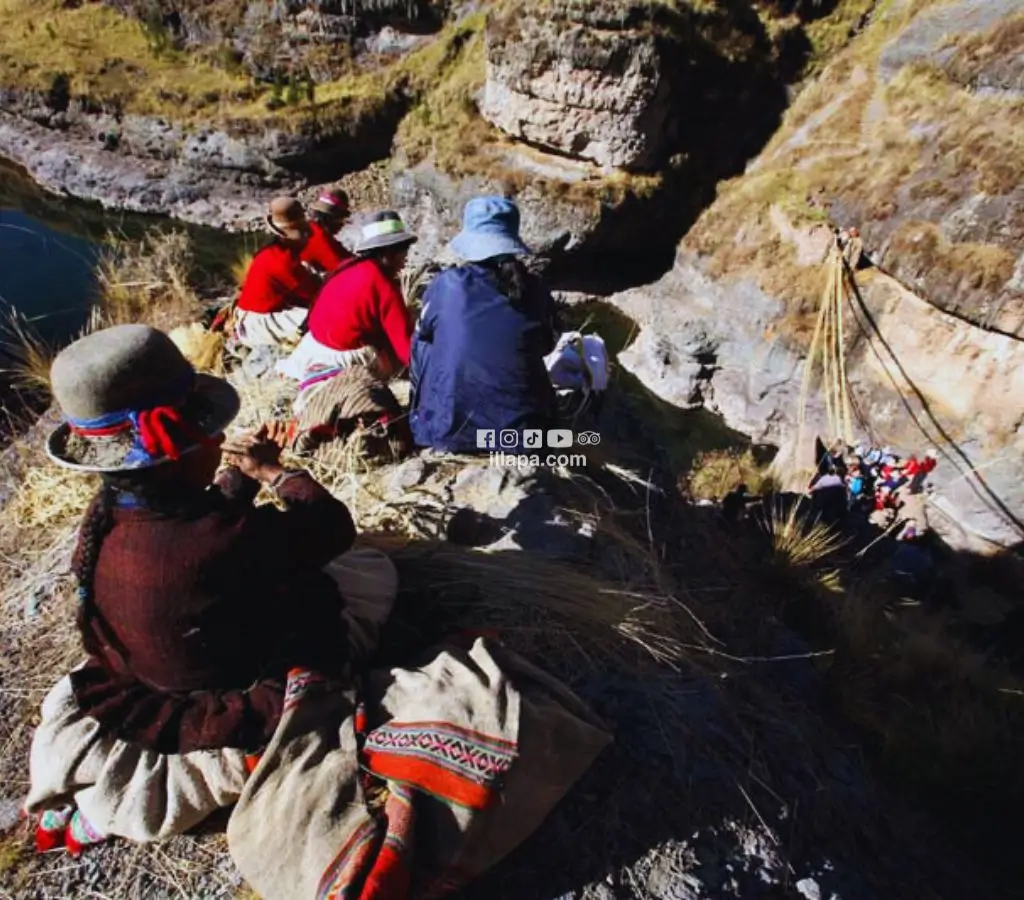
The weaving and tying techniques used in the construction of the Queshuachaca Bridge are inherited from Inca tradition and have been passed down from generation to generation over the centuries. Expert weavers use ancestral methods to interweave the ichu fibers and create the sturdy cables that support the bridge.
For this, they must already have thin ropes made previously by each family in these villages, and then proceed to tie them carefully; this ensures the stability and durability of the structure in adverse conditions.
You must bear in mind that in this part, only men are dedicated to the final assembly and weaving of the bridge. As I mentioned earlier, this ritual follows steps, and each inhabitant respects it. In this case, women are only in charge of collecting and weaving thin ropes, and the next process, which is the assembly of the bridge, is done only by men due to an ancestral tradition.
Women by no means can descend to the lower part where the reconstruction of said bridge is taking place because it is believed that if a woman descends, the bridge may collapse, and there may be poor agriculture. This has been respected since the Incas, and they continue to do so.
Generally, women are found in the upper part weaving thin ropes to increase the assembly of the bridge. These are rules that everyone participating in this ancestral tradition must respect.

Despite being mainly built with organic materials, the Queshuachaca Bridge exhibits remarkable resistance to the harsh Andean climate and seismic activity in the region. The ichu fibers, being flexible and elastic, allow the bridge to adapt to the movements of the terrain during earthquakes, while the compaction of the wild straw and soil provides structural stability. This ingenious design has allowed the bridge to endure over the centuries, resisting the passage of time and natural elements.
The age of the Queshuachaca Bridge is estimated to be over 600 years, making it an invaluable vestige of the Inca legacy in the region. The construction of this bridge required specialized labor and the expert knowledge of Inca engineers and architects, who used the natural resources available in their environment to create a durable and functional structure. The Queshuachaca Bridge is a tangible testament to the ingenuity and technical skill of this ancient civilization.
The Incas developed advanced techniques for bridge construction that allowed them to overcome the natural challenges present in their mountainous territory. Using materials such as stone, plant stems, and vegetable fibers, Inca engineers designed bridges that adapted to the terrain's topography and resisted the forces of water and climate. These structures were built with care and precision, leveraging Inca mathematical knowledge to ensure their stability and durability, making them the best architects and engineers of their time.
The Queshuachaca Bridge is the setting for an annual renewal ritual that takes place in June, coinciding with the beginning of the dry season in the Andean region. This ritual begins with an offering to the Pachamama (Mother Earth) and the protective Apus conducted by the Andean priest or paqo.
This is a sacred ceremony in which local communities gather to dismantle the old bridge and weave a new one using traditional techniques passed down from generation to generation. This symbolic act not only ensures the bridge's continuity but also strengthens community ties and keeps ancestral traditions alive.
Due to this ancestral work, which is a spectacular feat of Inca engineering and is preserved to this day, it was designated as Intangible Cultural Heritage by UNESCO in 2013.
Here we can see a documentary about the construction of the Queschuachaca Bridge:
The maintenance and renovation of the Queshuachaca Bridge involve the active participation of four Quechua communities in the region: Huinchiri, Chaupibanda, Choccayhua, and Qollana Quehue. These communities work collaboratively (Minka, known in Inca times as community work), providing their labor and specialized knowledge to ensure the project's success.
The construction and care of the bridge are considered a shared responsibility, reflecting the deep connection between people and their natural environment in Andean cosmology.
The ritual of renewing the Queshuachaca Bridge is immersed in a profound spiritual sense, beginning with offerings to Pachamama (Mother Earth) and the protectors or Apus as a gesture of gratitude and respect.
These offerings include grains, coca leaves, and other elements considered sacred by the Quechua communities. Through these rituals, they seek to ensure the protection and blessing of natural forces to guarantee the bridge's safety and stability for those who cross it.
The Inca Queshuachaca Bridge, also known as the Q'eswachaka Bridge, is an architectural gem located in the Quehue district of the Canas province in the Cusco region.
The Canas province is located in the southern part of the Cusco region, one of Peru's most emblematic areas in terms of cultural heritage and natural beauty. Canas is known for its picturesque mountain landscapes, fertile valleys, and rich cultural heritage, including archaeological remains of the Inca civilization. It is in this impressive setting where the Inca Queshuachaca Bridge is located, standing out as a symbol of the engineering and skill of the ancient Incas.
To reach the Inca Queshuachaca Bridge, you can take a road route from the city of Yanaoca, which is approximately 44 kilometers away. Yanaoca, located in the Canas province, serves as a starting point for those who wish to explore this historical marvel. From Yanaoca, the journey offers a panoramic route through the Andean mountains, allowing visitors to appreciate the spectacular landscape as they approach their destination.
For those in the city of Cusco who wish to visit the Inca Queshuachaca Bridge in a comfortable and organized manner, the company Illapa Culturas Andinas offers exciting excursions that include transportation, specialized tour guide, and a complete experience to immerse oneself in the history and culture of the region.
These excursions usually depart from the center of Cusco and offer the opportunity to explore not only the bridge but also other nearby sites of interest and enjoy the natural beauty of the surroundings. With Illapa Culturas Andinas, travelers can be assured of having an experienced team that will provide them with an unforgettable experience, full of knowledge and adventure.
